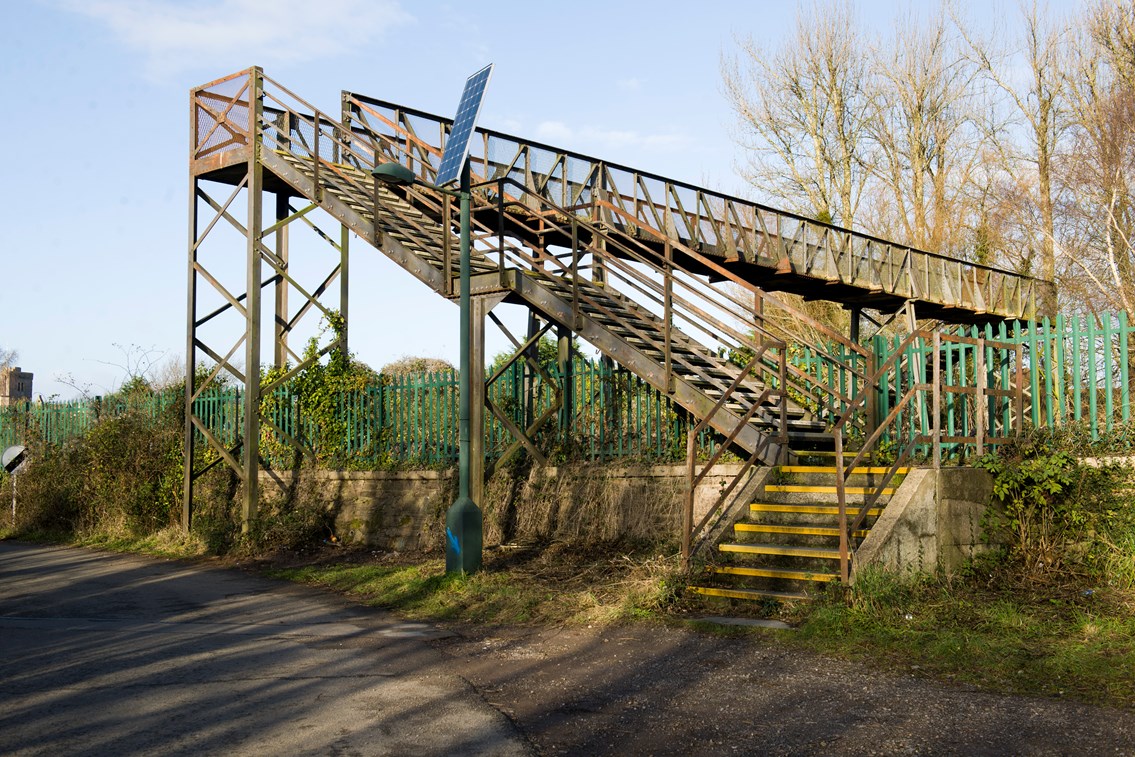Monday 2 Mar 2015
Preparation work begins to electrify South Wales railway and improve journeys
- Region & Route:
- | Wales & Western: Wales & Borders
- | Wales & Western
Network Rail will soon begin major preparation work in the run up to electrifying the South Wales Mainline.
The electrification of the railway between London and Swansea will provide faster, greener, quieter and more reliable journeys for tens of thousands of passengers every day. It will also help stimulate economic growth across the region by better connecting towns and cities in South Wales and beyond.
In order to accommodate the overhead lines which will power the electric trains, some road, foot and rail bridges that span the Mainline will need to be raised, either by amending the existing structure or demolishing the existing bridge and building something new in its place.
The electrification project has a phased approach to minimise disruption to communities, with work moving from east to west. Work on the first bridges in South Wales will kick-start in Monmouthshire this spring.
Graeme Tandy, route delivery director for Network Rail, said: “Electrification will transform the railway between London and South Wales to make journeys faster, more reliable, greener and quieter for passengers. It will also help support economic growth across South Wales.
“In order to reap the benefits of an electrified railway, an extensive construction programme is first required, including work to prepare the line for overhead lines. This will begin in Monmouthshire shortly and will include work to a number of existing bridges that are too low to accommodate the new infrastructure. We try to avoid reconstructing bridges where possible, but at some locations it is the only feasible option, particularly if a bridge is in poor condition. Once this work is completed the reconstructed bridges won’t need to be replaced for more than 100 years.
“I apologise for any disruption caused, but I want to reassure local communities we will complete the work in the quickest and safest possible way to minimise disruption and work with local authorities to plan appropriate diversions.
“We will begin holding drop-in sessions for residents this spring and I would encourage people to come along to find out about the work and the long-term benefits electrification will bring to South Wales.”
The first bridges identified as requiring reconstruction are two footbridges near Magor. Work to replace Undy Halt footbridge, in the village of Undy, and Whitewall footbridge, which connects Whitewall Road to Magor village centre, is expected to begin in June and be completed by autumn.
The public footpaths over the current footbridges will be temporarily closed whilst the existing structures are removed and replaced with new footbridges.
Network Rail is developing a programme that will see a number of bridges in Monmouthshire modified over the coming years.
The project is being carefully planned so that work is staggered to eliminate the chances of neighbouring bridges being closed at the same time. Network Rail is working closely with local authorities to ensure effective and appropriate diversions are put in place.
As part of the project, overgrown vegetation is being cut back along the railway in Monmouthshire to avoid it coming into contact with the overhead electrified lines.
Work to bridges and vegetation clearance is expected to be completed in 2016, piling work will then begin, which is required to install foundations which will facilitate overhead electrical lines.
Members of the public who are interested in finding out more about electrification in Monmouthshire are invited to public information sessions, which will be held between 2pm and 8pm on the following dates:
- Monday 9 March at Undy Church and Community Hall, Church Road, Undy, Caldicot, NP26 3EN.
- Thursday 12 March at Magor Ebenezer Baptist Church, the Square, Magor, Caldicot, NP26 3HY.
- Wednesday 15 April at Rogiet Village Sports Hall, off West Way, Rogiet, NP26 3SP.
- Tuesday 21 April at Caldicot Town Council Building, Sandy Lane, Caldicot, NP26 4NA.
- Anyone requiring additional information can call Network Rail’s 24-Hour National Helpline on 08457 11 41 41.
Notes to editors
The South Wales Mainline is an important rail route linking major towns and cities across the region. Electrification will transform the railway between London and Swansea to deliver a faster, greener, quieter and more reliable railway for passengers with extra capacity. This investment, as well as the introduction of a new fleet of trains, will improve journey times and make services more comfortable, smoother, cleaner and quieter for passengers and people living near the railway.
For more information about electrification visit:
http://www.networkrail.co.uk/great-western-route-modernisation/
Contact information
Passengers / community members
Network Rail national helpline
03457 11 41 41
Latest travel advice
Please visit National Rail Enquiries
Journalists
Network Rail press office - Hannah McCarthy
Media Relations Manager
07710 940248
hannah.mccarthy@networkrail.co.uk
About Network Rail
We own, operate and develop Britain's railway infrastructure; that's 20,000 miles of track, 30,000 bridges, tunnels and viaducts and the thousands of signals, level crossings and stations. We run 20 of the UK's largest stations while all the others, over 2,500, are run by the country's train operating companies.
Usually, there are almost five million journeys made in the UK and over 600 freight trains run on the network. People depend on Britain's railway for their daily commute, to visit friends and loved ones and to get them home safe every day. Our role is to deliver a safe and reliable railway, so we carefully manage and deliver thousands of projects every year that form part of the multi-billion pound Railway Upgrade Plan, to grow and expand the nation's railway network to respond to the tremendous growth and demand the railway has experienced - a doubling of passenger journeys over the past 20 years.
Follow us on Twitter: @networkrail
Visit our online newsroom: www.networkrailmediacentre.co.uk

